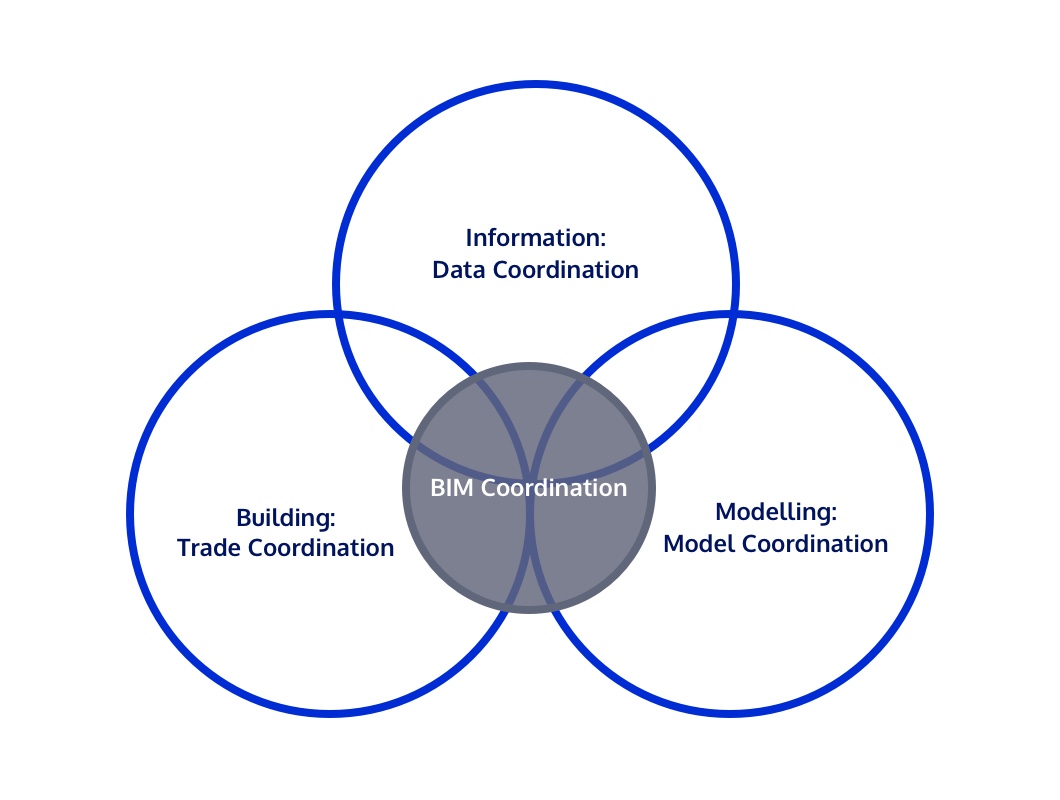BIM Is Project Management
BIM Goes Beyond Coordination
“BIM Coordination” not only focuses attention on Building Information Modelling (BIM) exclusively, but the term also implies that only certain qualified individuals can perform this function.
For me, BIM Coordination is really project management with an extra responsibilities. These can be divided into categories from which we can identify coordination tasks that we can then distribute to specific job roles.
I argue that we stop with “BIM Coordination” and concentrate on the levels at which BIM Managers should be involved.
A Blueprint for Collaboration
BIM Managers are often asked to perform coordination tasks — depending on their organisation’s size, expectations or past experience. I’ve often witnessed that an imprecise definition of BIM management can cause organisational challenges. It can keep a BIM implementation from extending beyond the intangible benefits such as clash detection and sheet management with which we typically associate improved coordination and quality of drawing sets.
That is the reason why it is necessary to determine what BIM coordination really means and at what level the BIM Manager should intervene.
I break BIM Coordination tasks into three distinct functions:
- Physical construction (Building);
- Data coordination (Information);
- 3D model coordination (Modelling).
You can see below that BIM coordination goes beyond modelling. It also includes information and construction management responsibilities. Model coordination is only a small part of the process. BIM Managers also have a role to play in guiding their project teams to ensure that all parts of a project are being managed.

Decision Model Coordination
Under design model authoring coordination, I include tasks that leverage model 3D geometry to facilitate communication and decision-making. 3D models, for example, can aid design planning, scheduling, as well as trade coordination.
For me, model management and maintenance are best practices that all stakeholders in a production setting are ultimately responsible for in order to ensure a well-maintained production environment. These tasks don’t really count as BIM.
You’ll find below some design model authoring coordination uses which can improve efficiency and cost savings by fostering better-informed decision-making below:
- Study models for reviewing difficult space allocation and impacted trades
- Model scenarios for model planning and coordination
- Milestone plans to identify tasks for deliverable completion
- Content model development per Level-of-Detail (LoD) specification
- Model or technology integration to facilitate information exchange
- Conflict resolution tracking and responsibility follow-up
- Integrated quality assurance (QA) and quality control (QC) development
- Tracking of model status and progress, as well as element ownership transfer
- 3D quantification facilitation
Asset Model Coordination
Under this activity, I include information and data-oriented tasks that are associated with each deliverable. By breaking out asset models by deliverable, we can more clearly identify, track and coordinate data requirements at each phase of the life cycle. Coordination responsibilities can vary — depending on the information requirements that have been outlined in the execution plan and other documents.
The important thing is that the right data and content is input in the models at each life-cycle stage so that deliverables will be met. This calls for model integrity reviews for verifying that models include the correct data for downstream use. And here, I don’t mean the model reviews that we often perform to clean and lean down a model prior to a data exchange! I’m talking about extensive model integrity reviews of a project’s data. If your project requires integration in a facilities management application, for example, a model integrity review would ensure that the locations of all components, as well as associated specs, warranties and service manuals are listed in digital format.
Typical Common Data environment (CDE) information management tasks are also carried out to support data exchanges and ensure model/data integration and timely coordination. Depending on your project and organization size, they can be performed by a Project Manager or Project Admin, or may even require the BIM Manager’s assistance.
Structuring Your BIM Ecosystem
The BIM Manager’s level of involvement will also depend on whether the organization has a large self-sustaining BIM ecosystem. The BIM Manager may be the individual who is tasked with managing and performing trade and data coordination. Ideally, though, the BIM Manager would provide oversight and guidance to a BIM Coordinator or Project Manager for these tasks.
Either way, the organization needs to understand that coordination tasks are critical to a successful BIM implementation, and can quickly turn into a full-time job. That’s why a certain amount of time and budget should be allocated to developing and driving enterprise/overhead initiatives.
Disclaimer
Opinions and views expressed in this guest post are the solely of the author and do not express the views and opinions of Cloudalize, its employees or any one associated with Cloudalize.
Author: Brett Goodchild
(BIM VDC Management Professional Dakota Technology Group)

